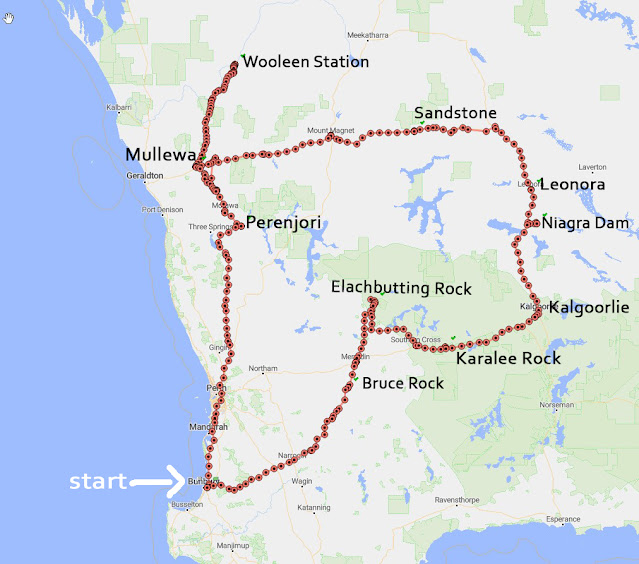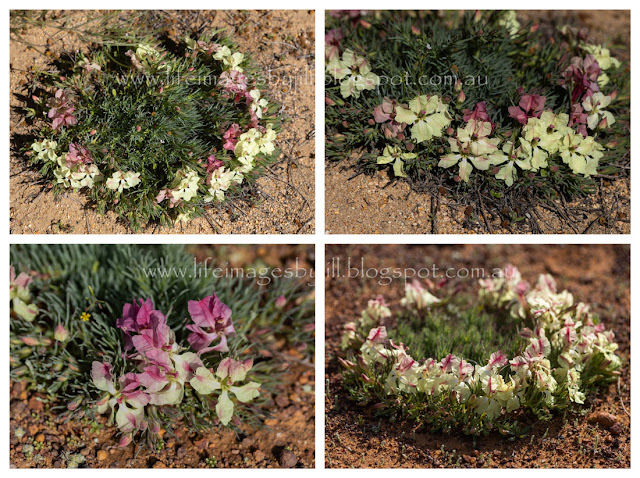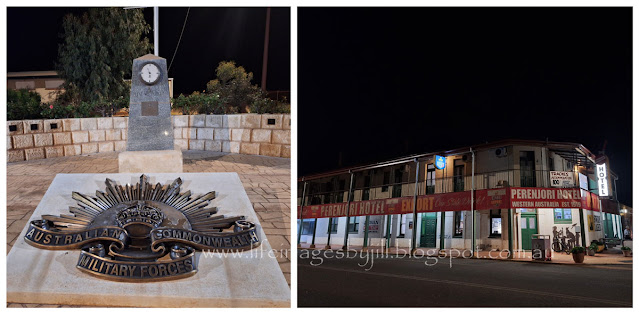Hi all, I hope all is going well with you and yours. It is now a few weeks since we returned from our Midwest-Gold fields-Wheatbelt trundle which I promised on 23 September to share with you. Where has time gone? Life has been busy.
Today I am sharing with you the first part of that trip. But first a map to help you orientate - starting in Bunbury in the south west, north to Perenjori, Mullewa, Wooleen Station, then east to Sandstone, Leonora, Niagra Dam, back west and south to Karalee Rock, Elachbutting Rock, Bruce Rock and back home - 19 days - a distance of 3,588 kilometres.
Warning - standby for a wildflower overload! But I am not a botanist, so please forgive me any errors in my identification. You can learn more about exploring Western Australia's wildflower trails here - Wildflower Country.com
We left home around 6.45am on the 1st September, with a few stops along the way up through the western wheatbelt, including Coorow (where there is a nice park to stop for lunch and an interesting history/machinery display),
We arrived in Perenjori at 1.44 pm and booked into the caravan park, which is very popular with tourists during the wildflower season - we had booked ahead. Located just a short stroll from town, the caravan park is an ideal place to base yourself while you explore the area. There are powered and unpowered sites, and cabins.
The name Perenjori is derived from the Aboriginal word “Perangery”, meaning water hole. Sir John Forrest conducted explorations in 1869, and surveyed the area in 1896. Gold was discovered in 1894. When the railway line was officially opened in 1915, the town’s estimated population was 100. Perenjori was officially announced as a town on February 16th 1916. Today Perenjori is one of the largest agricultural Shires in WA, with a combination of farming, pastoral and mining leases.
We had enough time in the afternoon to go out to the gravel pit just north of Perenjori to see the distinctive Wreath Leschenaultia - Lechenaultia macrantha - which were just starting to flower. The turn-off is about 6km north of Perenjori. We had seen them here previously, so we knew where to look. They are a species of flowering plant in the family Goodeniaceae and is endemic to inland areas of south-western Western Australia. Wreath Leschenaultia's are a highlight of wildflower trundles.
We also saw Upside Down Pea Bush - Leptosema daviesioides - whose flowers pop out at ground level under the bush.
And the Emu Tree - Hakea francisiana - that has a very woody nut
On Monday morning we visited the Visitor Centre to pick up information, maps and find out from the very helpful assistant what was flowering where. The Visitor Centre is open August – October (Wildflower Season) weekdays from 10am to 2pm. There is also an interesting museum in the same building.
First we stopped at Monsignor Hawes - St Joseph's Church. The foundation stone was laid in 1937.
We packed a lunch bag for a wildflower day trip from Perenjori. Leaving via the Perenjori-Rothsay Road east of Perenjori, then turning onto Wanarra Road, our first stop was Orchid Ridge, 33km from Perenjori. This is a rocky ridge on private land. It is very kind of the farm owner to allow visitors onto his land, so please be respectful, don't leave rubbish, and leave gates as you find them. There are walk tracks around the rocky ridge.
Different orchids flower at different times, and sun orchids open with the sun. We saw blue Granite Sun Orchids - Thelymitra petrophila, white spider orchids, snail orchids, and the Dainty (Shy) Blue Orchid - Cyanicula amplexans
and a new one to us - a hybrid of the Lemon-scented Sun Orchid - Thelymitra antennifera and the Granite Sun Orchid - Thelymitra petroophila - gorgeous! It was under shade so only just opening with the sun.
We also saw the lovely purply-blue Graceful Honey Myrtle - Melaleuca radula - also new to us.
The Camel Soak granite catchment (also known as the Rock Pool) was sunk as a watering point for men and their camel teams working on the No 2 Rabbit Proof Fence in 1903-1905. During rain the water catchment and gnamma holes on the rock fill with water.
And a curious plant which I haven't been able to get an identification for yet. Perhaps one of the Samphire species.
There is a 750 metre walk trail to the top - I am sure it is a lot steeper than the last time we visited! We have also camped here previously. Here is a view from the top. You can also visit the old Rothsay Townsite and Cemetery, but we didn't this trip.
 Thank you so much for stopping by. I value your comments and look forward to hearing from you. I will try to visit your blogs in return. Have a wonderful week.
Thank you so much for stopping by. I value your comments and look forward to hearing from you. I will try to visit your blogs in return. Have a wonderful week. I am linking up to the link-ups below. Please click on the links to see fabulous contributions from around the world - virtual touring at its best!

























Wow so beautyful. Looking forward to part two
ReplyDeleteWow, your photos are just beautiful. Gorgeous wildflowers, I love the wrath flowers. The church is lovely. Wonderful post. Take care, have a wonderful week!
ReplyDeleteJill - I am sitting here with my coffee and a big grin on my face! You know how happy it makes me to see ORCHIDS in the wild! As much as I would prefer to see them in person, it is nothing short of heavenly to witness them through your eyes! Thank you so much for making this available to all of us. I also liked the swaths of Everlastings - so pretty! Have a great week, friend!
ReplyDelete...Jill, thanks for taking me along to all of these beautiful sights. I hope that we can do it again, be well and have a wonderful week.
ReplyDeleteI love seeing all these gorgeous wildflower blooms!
ReplyDeleteso many to share, this is just a snap-shot!
DeleteWhat a trip! Gorgeous pictures -- thank you for sharing with us!
ReplyDeleteYou saw some beautiful flowers. Such gorgeous colours. Thank you for sharing your trip. Visiting from "Through my lens".
ReplyDeleteWhat a fabulous trip! I am loving all the stunning flowers!
ReplyDeletehttps://www.kathrineeldridge.com
Lovely flower! The churches look nice too.
ReplyDeleteSimply gorgeous! What marvelous blooms and striking scenery!
ReplyDeleteThank you so much for sharing at http://image-in-ing.blogspot.com/2024/10/budding-artist.html
It's okay with the wildflower overload... I must laugh about, but hand on the heart, I love to read about, to see the lovely pittoresken. There are such interesting posts about nature from the different countries!
ReplyDeleteAnd thank you too for your nice comment.
Have a wonderful week.
This was amazing!
ReplyDeleteDear Jill, there is truly a sensational number of wonderful wildflowers - a sea of colors and spring joy! I found the Wreath Leschenaultia particularly surprising - I would never have thought that this was a naturally occurring flower formation. Fascinating and beautiful! Thank you for taking me on this exciting trip!
ReplyDeleteAll the best and lovely October days, Traude
https://rostrose.blogspot.com/2024/10/weltreise-2024-sw-usa-roadtrip-teil-2.html
These wild flower trails are incredible, i would love to follow in your footsteps one day. Such lovey finds especially the wild orchids! Have a great week
ReplyDeleteWren x
This looks/sounds like a great trip. The flowers are wonderful and WOW to the wild orchids! Thank you for linking up and have a great week.
ReplyDeleteAbsolutely stunning orchids and all the other exotic (to me) wildflowers. What a wonderful camping trip . We would love this! Sallie (FullTime-life)
ReplyDelete